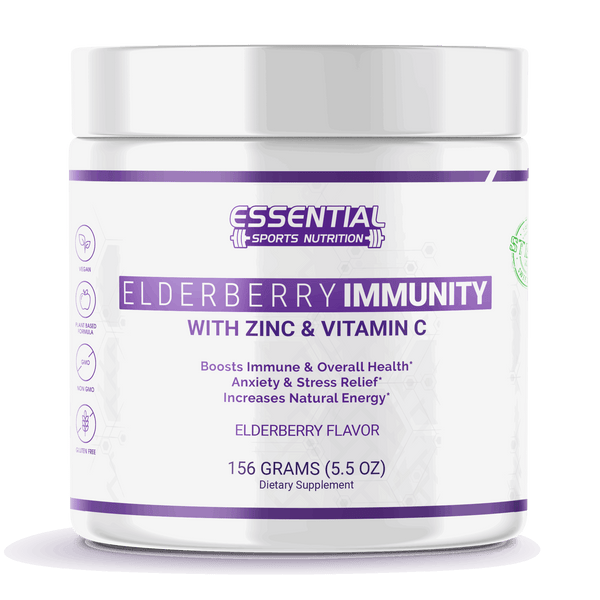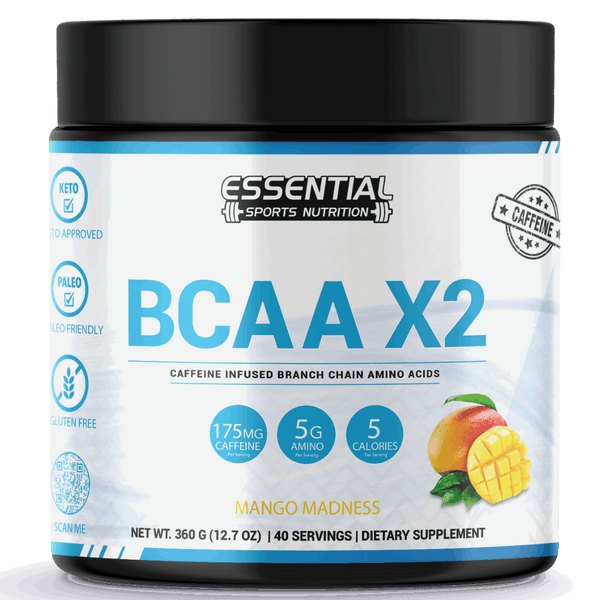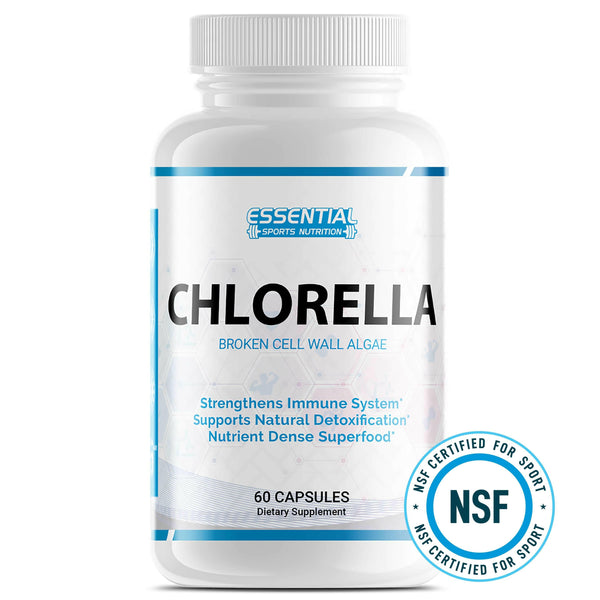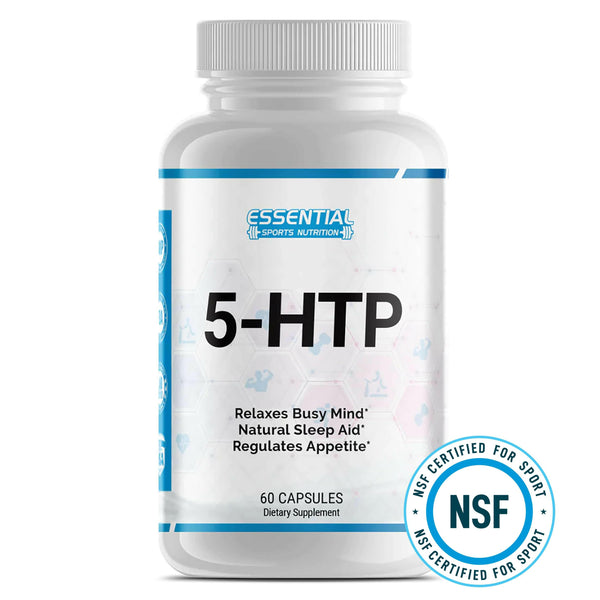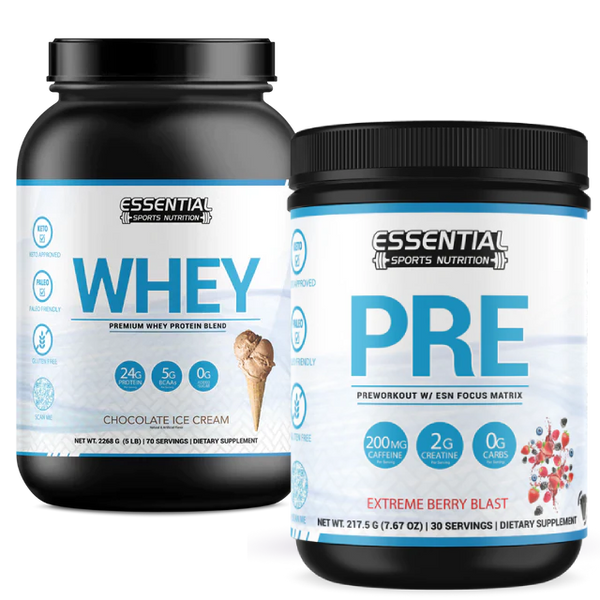Percussion Therapy: Using Massage Guns for Pain Relief and Muscle Recovery
Whether you're an athlete pushing your limits, someone tackling the rigors of everyday life, or simply struggling with nagging muscle discomfort, finding effective ways to recover and alleviate pain is likely a top priority.
Sore muscles can spring from rigorous workouts, long days at the office, or even minor strains around the house—leaving us searching for relief that's both efficient and safe.
Percussive therapy has stepped into the spotlight as a game-changer in muscle recovery and pain relief. This innovative approach not only eases muscle tension but also enhances circulation throughout your body—a dual-action benefit many are eager to tap into.
Our article is here to guide you through percussion therapy's ins and outs, ensuring you harness its full potential for wellness. Ready to take a step towards better health? Let this be your starting point!
Key Takeaways
- Percussion therapy, using tools like massage guns, delivers rapid pulses of pressure to muscles, boosting recovery and reducing pain through improved circulation and nutrient delivery.
- Scientific research backs up the benefits of percussion therapy which includes easing muscle soreness, enhancing flexibility, and preventing delayed onset muscle soreness (DOMS) after workouts.
- Personalized treatment options with adjustable intensities make percussion therapy suitable for a wide range of individuals from athletes to office workers experiencing chronic pain or stiffness from sedentary lifestyles.
- Safety considerations such as starting with light pressure and avoiding sensitive areas are important when using percussive devices to avoid injury and ensure the most effective outcome.
- Integrating regular percussion therapy into a wellness routine can complement other health practices for a comprehensive approach to maintaining muscle health and overall well-being.
Understanding the Benefits of Using Percussion Therapy

Percussion therapy, also known as percussion massage or vibration therapy, is a form of deep tissue manipulation that uses rapid pulses of pressure to stimulate muscle recovery and pain relief.
This technique has been used for centuries in various cultures and is now gaining popularity in the modern wellness industry.
Definition and Origins of Percussive Massages
Percussion therapy might sound modern, but the concept behind it goes way back. Ancient civilizations used therapeutic drumming to promote healing and wellness. Fast forward to today, and we've harnessed that same principle using technology for muscle recovery.
Massage guns deliver targeted vibrational healing, mimicking the ancient practice in a high-tech fashion.
The term "percussive therapy" refers to a technique involving rapid bursts of pressure into the body's muscle tissue. A massage gun is the most common tool for this type of therapy.
These devices are engineered to provide deep tissue massages without needing a physical therapist. They work by swiftly tapping the surface of your skin, penetrating deep into muscle fibers to stimulate blood flow and relieve tension.
This method revolutionizes traditional massage techniques by offering quick relief with minimal effort. Though its popularity skyrocketed recently amongst athletes and fitness enthusiasts, its roots trace back many years, evolving from hand-done percussive movements to sophisticated handheld devices designed for optimal performance enhancement and swift pain management.
How Percussion Therapy and Vibration Therapy Works
Percussion therapy takes advantage of a body’s natural response to vibration and deep muscle stimulation. Think of it like a high-intensity, targeted massage that reaches deep into your muscle tissue without being invasive.
Massage guns, the tools commonly used for this type of therapy, rapidly strike the surface of your skin, sending waves of pressure deep into muscle fibers. The continuous pounding creates a ripple effect that enhances blood circulation in the treated area.
This increased blood flow brings more oxygen and nutrients to muscles and helps flush out toxins and metabolic waste products from tissue damage or intense workouts. As muscles receive these vital resources, they begin to recover faster from soreness and fatigue.
Meanwhile, percussion therapy gently stretches muscle fibers and connective tissues which can improve overall flexibility and range of motion. It's much like kneading dough; consistent application can make muscles pliable, reducing stiffness that often accompanies heavy exercise or prolonged periods of inactivity.
Regular use of massage guns can also be instrumental in preventing delayed onset muscle soreness (DOMS) by helping to break down lactic acid buildup post-exercise. Athletes have found percussive therapy particularly beneficial as it aids both pre-workout preparation by warming up muscles to prevent injury, as well as post-workout recovery by minimizing pain associated with overexertion.
It does all this while delivering concentrated relief directly where you need it most without straining other parts of your body—a focused approach traditional massaging techniques often miss.
Science of Percussion Therapy

Percussion therapy has been shown to promote muscle relaxation and recovery, enhance blood circulation, improve range of motion, and prevent delayed onset muscle soreness (DOMS). These insights are supported by scientific research and can provide a better understanding of the physiological benefits of percussion therapy for muscle recovery and pain relief.
Muscle Relaxation and Recovery
Percussive therapy does wonders for easing tight muscles and accelerating the recovery process. Imagine each pulse from a massage gun acting like a mini hammer, gently knocking away the tension in overworked muscles.
The rapid strokes increase blood flow, bringing fresh nutrients that are crucial for repair and growth while flushing out unwanted waste products. This improved circulation not only helps relieve muscle soreness but also contributes to faster healing after intense physical activity.
Athletes often turn to massage guns post-exercise as they've been shown to reduce muscle tension significantly, making it easier for them to get back into their training routine without stiff or painful muscles holding them back.
Consistent use of this therapy can help maintain muscle flexibility, potentially preventing injuries caused by overuse or strain. With its ability to aid in reducing delayed-onset muscle soreness (DOMS), percussive therapy ensures that you're ready to tackle your next workout with greater ease and less discomfort.
Enhanced Blood Circulation
Percussion therapy, through the use of massage guns, stimulates blood flow to muscle tissue. This increased circulation brings essential nutrients to the muscles and helps eliminate waste products, supporting quicker recovery after physical activity.
The rapid strokes from massage guns enhance blood flow, reducing soreness and improving range of motion in muscles.
Additionally, percussive therapy also promotes improved circulation and activates the lymphatic system. These combined effects aid in reducing muscle tension, decreasing soreness post-workout, and contributing to overall enhanced muscle recovery.
Improvement in Range of Motion
Percussive therapy using massage guns can improve range of motion by stimulating blood flow to the muscles. This increased blood circulation helps in reducing muscle tension and increasing flexibility, allowing for a wider range of motion in the joints.
By targeting specific muscle groups with rapid strokes, percussion massage can also relieve tightness and stiffness, further enhancing overall mobility.
The therapy's ability to reduce delayed-onset muscle soreness (DOMS) also contributes to improved range of motion. DOMS often restricts movement due to muscle discomfort, but percussive massage aids in alleviating this soreness, thereby promoting easier and more extensive joint movement.
Prevention of Delayed Onset Muscle Soreness (DOMS) and Tightness
Percussion therapy is renowned for its ability to prevent delayed-onset muscle soreness (DOMS) by reducing muscle tension and soreness after workouts. The rapid strokes of massage guns stimulate blood flow, enhancing nutrient delivery to the muscles and aiding in the removal of waste products.
This process not only alleviates soreness but can also improve range of motion, thus contributing to a quicker recovery post-exercise. By minimizing the impact of DOMS, percussion therapy plays a vital role in facilitating enhanced muscle recovery and promoting overall muscle health.
The therapy's capacity to reduce DOMS aligns with research findings that have demonstrated its effectiveness in managing pain, mitigating stress, and improving mobility following physical exertion.
Practical Applications of Percussion Therapy
Using massage guns effectively and understanding safety considerations and best practices are essential for maximizing the benefits of percussion therapy. It's crucial to learn how to properly use these devices in order to experience optimal muscle recovery and pain relief.
Using Massage Guns Effectively
To use massage guns effectively for muscle recovery and pain relief:
- Choose the right attachment head based on the target area, such as the round head for large muscle groups and bullet head for trigger points.
- Apply gentle pressure initially and gradually increase as needed, focusing on each muscle group for at least 30 seconds to 2 minutes.
- Move the massage gun in a slow, controlled manner, avoiding rapid or aggressive movements to prevent discomfort or bruising.
- Use the massage gun after workouts or physical activity to aid in muscle recovery and reduce soreness.
- Adjust the speed settings based on your comfort level and targeted muscle group, starting with a lower setting and increasing as needed without causing discomfort.
- Incorporate consistent hydration before and after using the massage gun to support muscle recovery and optimize its benefits.
- Avoid prolonged use on bony areas or sensitive tissues, ensuring that you focus solely on muscular regions for effective therapy.
Safety Considerations and Best Practices Using Percussion Massagers
To ensure safe and effective use of percussion therapy, it is important to take the following precautions and best practices into consideration:
- Use the Right Pressure: When using a massage gun, apply gentle pressure at first, gradually increasing as needed. Avoid using excessive force to prevent tissue damage.
- Proper Warm-Up: Prior to using a massage gun, engage in light physical activity or stretching to prepare the muscles for the therapy. This can help prevent potential injuries or discomfort.
- Targeted Application: Focus on specific muscle groups and avoid using the massage gun over joints, bones, or sensitive areas to minimize the risk of injury.
- Limit Usage Duration: It is recommended to use a massage gun for short durations initially and then gradually increase if necessary, as prolonged use may lead to overstimulation.
- Regular Maintenance: Ensure that the massage gun is clean and in good working condition before each use. Follow manufacturer's instructions for maintenance and cleaning.
- Seek Professional Advice: If you have any underlying medical conditions or concerns about using percussion therapy, consult with a healthcare professional or certified therapist before incorporating it into your routine.
- Rest Periods: Allow adequate time between sessions to give your muscles time to recover from the therapy and prevent excessive strain.
- Stay Hydrated: Drink plenty of water before and after using percussion therapy to support muscle recovery and prevent potential dehydration.
- Listen to Your Body: Pay attention to how your body responds during and after percussion therapy sessions. If you experience any discomfort or unusual sensations, discontinue use immediately.
- Educate Yourself: Gain knowledge about proper techniques, safety precautions, and contraindications associated with percussion therapy by seeking guidance from qualified sources such as healthcare professionals or certified trainers.
Using a Massage Gun vs. Traditional Massage Techniques

Percussion therapy offers a more personalized approach to muscle recovery, providing targeted relief and improved blood circulation compared to traditional massage techniques. To discover the comparative advantages in more detail, read on.
Comparative Advantages
One of the key elements in the recovery toolkit for anyone looking to enhance muscle recuperation and pain relief is percussion therapy. It stands out distinctly from traditional massage techniques, with several comparative advantages worth considering.
| Percussion Therapy | Traditional Massage |
|---|---|
| Rapid strokes increase blood flow and nutrient delivery to muscles. | Manual kneading may stimulate circulation but less dynamically than percussion. |
| Targets deep tissue layers, promoting muscle relaxation and recovery. | May not reach as deep as percussive devices without significant pressure. |
| Portable and can be used independently without the need for a therapist. | Typically requires an appointment with a professional masseur. |
| Helps prevent delayed onset muscle soreness (DOMS) effectively. | DOMS prevention is possible but often less immediate in effect. |
| Adjustable intensities suit various pain thresholds and muscle conditions. | Pressure and technique depend on the masseur’s skill and client’s feedback. |
| Contributes to improved muscle strength and flexibility over time. | Benefits for strength and flexibility vary, often focusing on relaxation. |
| Research-backed benefits in reducing muscular tension and soreness. | Benefits are well-established but can be inconsistent across different practitioners. |
| Can be integrated into a personalized recovery regimen easily. | Often requires scheduling and travel time, challenging routine integration. |
Massage guns and other percussive devices empower users to take control of their muscle recovery process, offering an effective way to manage pain and improve range of motion. With these advantages in mind, percussion therapy has become a favored approach for many seeking to optimize their wellness routines.
Personalized Approach to Muscle Recovery
Percussion therapy offers a personalized approach to muscle recovery, catering to individual needs and preferences. The intensity and frequency of percussive massage can be adjusted based on the specific requirements of each person, allowing for tailored treatment that targets areas of muscle soreness or tightness.
Furthermore, various massage gun attachments and techniques offer a customizable experience, addressing specific muscle groups or zones with precision.
Moreover, individuals with diverse fitness levels and athletic endeavors can benefit from percussion therapy customized to their unique training regimens. Whether it's professional athletes looking to enhance acute muscle strength or individuals dealing with chronic pain seeking relief, the adaptable nature of percussion therapy makes it suitable for a wide range of users.
Who Can Benefit from Percussive Therapy?

Athletes and fitness enthusiasts, individuals with chronic pain, and office workers with sedentary lifestyles can all benefit from percussion therapy to improve muscle recovery and alleviate pain.
Read on to learn more about the personalized approach of percussion therapy for different needs and lifestyles.
Athletes and Fitness Enthusiasts
Athletes and fitness enthusiasts can benefit significantly from percussion therapy. This innovative approach aids in enhancing muscle recovery, reducing soreness after workouts, improving flexibility, and increasing acute muscle strength.
Moreover, the therapy's capability to stimulate blood flow to muscles can contribute to improved circulation and aid in the process of flushing out waste products while supplying essential nutrients for faster recovery.
As a result, athletes and fitness enthusiasts can experience reduced muscle tension, decreased soreness post-workout, and overall enhanced mobility.
Incorporating percussion therapy into their wellness routines enables athletes and fitness enthusiasts to manage pain more effectively, reduce stress levels, and foster overall improvement in muscle recovery.
Individuals with Chronic Pain
Chronic pain sufferers can benefit from percussion therapy as it can help manage pain, reduce muscle tension, and improve overall muscle recovery. Research has shown that percussive massage can effectively decrease soreness and enhance mobility after exercise, offering relief to those dealing with persistent discomfort.
Additionally, the therapy aids in improving circulation and stimulating the lymphatic system, providing potential relief for individuals struggling with conditions such as fibromyalgia or chronic lung disease.
Moreover, by reducing delayed-onset muscle soreness (DOMS) and aiding in muscle recovery, percussion therapy offers a promising avenue for alleviating the daily struggles of individuals living with chronic pain.
Percussion therapy can also assist in mitigating stress associated with prolonged discomfort while enhancing acute strength and flexibility—factors crucial for maintaining a sense of independence and quality of life amidst ongoing physical challenges.
Office Workers and Those with Sedentary Lifestyles
Office workers and individuals with sedentary lifestyles often experience muscle stiffness, tension, and reduced blood circulation due to prolonged sitting. Percussion therapy can be beneficial for this demographic as it helps in combating the negative effects of sitting for extended periods.
Through targeted muscle stimulation, percussion therapy can improve blood flow, reduce muscle tension, and alleviate soreness associated with prolonged sitting or a lack of physical activity.
Furthermore, using a massage gun during breaks or after work can aid in relaxing tight muscles and enhancing overall well-being.
The repetitive nature of office tasks and limited movement can lead to increased risk of musculoskeletal issues such as back pain, neck strain, and postural imbalances. Incorporating percussion therapy into a wellness routine for office workers may contribute to mitigating these concerns by promoting better circulation and relieving muscular discomfort.
Incorporating Percussion Therapy into Your Wellness Routine
Establishing a regular percussion therapy regimen can help improve muscle recovery and reduce pain. By incorporating percussion therapy into your wellness routine, you can enhance the effectiveness of other therapeutic practices and promote overall well-being.
Establishing a Recovery Regimen
To establish an effective recovery regimen, consider incorporating percussion therapy into your post-exercise routine. By using a massage gun, you can stimulate blood flow to the muscles, aid in flushing out waste products, and promote quicker muscle recovery.
Additionally, percussive therapy has been found to reduce muscle tension and soreness post-workout while enhancing flexibility and improving overall muscle strength. Including this form of therapy as part of your regular routine can help maintain optimal performance levels and ensure efficient recovery after physical activity.
Incorporating percussion therapy into your wellness regimen provides a personalized approach to address specific muscle recovery needs. It aids in reducing delayed-onset muscle soreness (DOMS) and promoting improved circulation for enhanced mobility after exercise.
Combining with Other Therapeutic Practices
Percussion therapy can be effectively combined with other therapeutic practices such as foam rolling, stretching exercises, or traditional massage techniques to enhance muscle recovery and pain relief.
Incorporating percussion therapy into a comprehensive wellness routine can complement the benefits of physical therapy and chiropractic care. This multi-faceted approach addresses muscle tension, soreness, and flexibility while promoting overall well-being through personalized combinations tailored to individual needs.
Integrating percussion therapy with existing therapies offers a holistic approach to managing chronic pain and enhancing athletic performance. By diversifying treatment modalities, individuals may experience more comprehensive healing effects that cater to different aspects of muscle recovery and rehabilitation.
Common Positive Results

Many report improved athletic performance and reduced pain through percussion therapy. Discover how individuals have incorporated this innovative approach into their wellness routine and experienced tangible benefits in their daily lives.
Case Studies of Improved Performance
Percussion therapy has been shown to have a positive impact on performance, as evidenced by case studies and testimonials from individuals who have integrated this therapy into their recovery regimens. Here are some specific instances of improved performance attributed to percussion therapy:
- Competitive athletes reported enhanced muscle recovery and reduced soreness after strenuous training sessions, allowing them to maintain peak performance levels consistently.
- Chronic pain sufferers experienced improved mobility and decreased discomfort, enabling them to engage in physical activities with greater ease and comfort.
- Office workers and those with sedentary lifestyles noticed increased energy levels and reduced muscle tension, contributing to improved posture and overall well-being.
- Individuals recovering from injuries or surgeries documented faster rehabilitation times and increased muscle strength, facilitating a smoother transition back to regular physical activities.
- Fitness enthusiasts noted quicker recovery times between workouts, leading to more frequent and effective training sessions, ultimately enhancing their overall fitness levels.
- Personal accounts revealed reduced stress and tension, leading to better sleep quality, mental clarity, and improved focus during physical activities.
Personal Accounts of Pain Relief
Percussion therapy has been credited with relieving pain for individuals with chronic conditions such as fibromyalgia and COPD (chronic obstructive pulmonary disease), often resulting in improved mobility and reduced discomfort. These personal accounts have highlighted significant relief from muscle soreness and tension after incorporating percussive therapy into their recovery routines. Here are some specific instances where individuals experienced notable pain relief through percussion therapy:
- Enhanced Mobility: Individuals reported increased ease in performing daily activities, such as walking and bending, due to reduced muscle stiffness.
- Alleviated Chronic Pain: Some users experienced decreased discomfort in areas prone to muscle knots and trigger points, contributing to an overall improvement in their quality of life.
- Reduced Exercise-Induced Soreness: Athletes and fitness enthusiasts noted accelerated recovery post-workout, with a noticeable reduction in post-exercise soreness after using percussion therapy.
- Improved Range of Motion: Users reported enhanced flexibility and reduced joint stiffness, leading to a more fluid range of motion during physical activities.
- Effective Pain Management: Those dealing with conditions such as tendinitis or overuse injuries found relief from persistent pain, allowing them to engage in daily activities with greater comfort.
- Minimized Discomfort During Recovery: Individuals recovering from recent surgeries or trauma expressed that percussion therapy helped mitigate discomfort and expedite the healing process.
- Lessened Muscle Tension: Users experienced relaxation of tight muscles, reducing cramping and promoting better overall muscle function.
Selecting the Right Percussion Therapy Device

When choosing a percussion therapy device, it's important to consider features such as speed settings, attachments, battery life, and noise level. Recommendations for different needs and budgets can help you make an informed decision that suits your specific requirements.
Recommendations for Different Needs and Budgets
If you are considering purchasing a percussion therapy device, there are various factors to consider. Here are some recommendations tailored to different needs and budgets:
- Portability: For on-the-go use or travel, look for a compact and lightweight massage gun that fits easily into your gym bag or suitcase.
- Adjustable Speed and Attachments: Opt for a device with adjustable speed settings and interchangeable attachments to customize your massage experience based on your specific muscle recovery needs.
- Battery Life: Consider the battery life of the massage gun if you anticipate using it frequently between charges. Look for models with long-lasting batteries or the option for extended battery packs.
- Noise Level: If you plan to use the device in shared spaces or quiet environments, choose a massage gun with low noise output to avoid disturbance.
- Durability and Warranty: Invest in a high-quality, durable device backed by a reliable warranty to ensure longevity and peace of mind regarding potential repairs or replacements.
- Cost-Effective Options: While exploring various devices, compare their features and prices to find an option that provides the best value for your budget without compromising essential functionalities.
- Targeted Massage Therapy: Select a percussion therapy device that offers targeted massage sessions, focusing on specific muscle groups or areas of pain and tension based on your individual requirements.
- User-Friendly Controls: Look for an intuitive interface and ergonomic design that allows for easy handling and operation, ensuring a comfortable user experience during each session.
- Research-Backed Technology: Consider devices that integrate advanced percussive therapy technology supported by scientific research demonstrating their effectiveness in muscle recovery and pain relief.
- Customizable Settings: Choose a massage gun with customizable settings such as intensity levels, timer options, and pre-programmed routines to adapt the therapy to your preferences and comfort level.
Future of Percussion Therapy
As technology continues to advance, the future of percussion therapy looks promising with potential innovations and trends in muscle recovery technology. Research directions and potential developments are also worth exploring as this field continues to evolve.
Innovations and Trends in Muscle Recovery Technology
Percussion therapy devices have evolved with technological advancements, offering more customizable settings to cater to individual needs. Manufacturers are integrating smart features and app connectivity, allowing users to track their recovery progress and customize massage programs according to specific muscle groups or activities.
Additionally, innovations in design and engineering have led to the development of quieter, lighter, and more portable massage guns that enhance user experience and convenience.
Furthermore, ongoing research is exploring the potential integration of percussion therapy with virtual reality (VR) technology for immersive pain relief experiences. This emerging trend aims to combine therapeutic benefits with a sensory-rich environment to further optimize muscle recovery outcomes.
Research Directions and Potential Developments
Ongoing research in the field of percussive therapy is focusing on exploring the specific physiological mechanisms underlying its effectiveness for muscle recovery and pain relief.
Current studies are delving into the impact of percussive massage on reducing muscle tension, alleviating soreness after exercise, and improving overall mobility. These investigations aim to provide a deeper understanding of how percussion therapy influences blood circulation, lymphatic system stimulation, and pain management.
Additionally, researchers are examining the potential long-term benefits of percussive therapy in preventing injuries and supporting athletic performance.
Further developments in percussion technology are anticipated to focus on enhancing device ergonomics and precision targeting to optimize therapeutic outcomes. Innovations may include advanced attachment designs tailored for specific muscle groups or anatomical areas, as well as customizable speed settings to accommodate varying recovery needs.
Integration with smart technology for personalized treatment regimens based on individual fitness routines and recovery goals is also an area ripe for exploration.
Percussion Massage Therapy FAQs
Q: What is percussion therapy?
A: Percussion therapy, also known as percussive therapy or vibration therapy, is a type of massage treatment that uses a massage gun or percussion massager to deliver rapid, concentrated pulses of pressure into the muscle tissues. It helps with muscle recovery, pain relief, and relaxation.
Q: How does percussion therapy work?
A: Percussion therapy works by targeting specific muscle groups with rapid bursts of pressure, effectively stimulating blood flow, reducing tension, and breaking up knots in soft tissue. The vibration from the massage gun helps to relax muscles and reduce soreness.
Q: What are the benefits of percussion therapy?
A: The benefits of percussion therapy include improved circulation, reduced muscle tightness, faster recovery from workouts or injuries, relief from muscle soreness, and enhanced mobility. It also helps in breaking up scar tissue and adhesions.
Q: How is percussion therapy different from traditional massage?
A: Percussion therapy uses a massage gun or percussion massager to deliver rapid pulses of pressure, targeting specific muscle groups with greater intensity than traditional massage techniques. This allows for deeper muscle penetration and more efficient muscle recovery.
Q: Can anyone use percussion therapy?
A: Yes, percussion therapy can be used by people of all fitness levels, from professional athletes to individuals recovering from injuries. However, it's advised to consult with a healthcare professional before using percussion therapy, especially if you have any existing medical conditions.
Q: How often should percussion therapy be used?
A: The frequency of percussion therapy usage depends on individual needs and fitness goals. It can be used daily as part of a recovery and maintenance routine, or as needed to alleviate muscle soreness and tightness.
Q: Are there any risks or side effects associated with percussion therapy?
A: When used properly, percussion therapy is generally safe and well-tolerated. However, excessive or improper use of a massage gun may lead to bruising, discomfort, or exacerbation of existing injuries. It's important to follow instructions and use the device with caution.
Q: How does percussion therapy help with muscle recovery?
A: Percussion therapy enhances muscle recovery by increasing blood flow to the targeted muscles, reducing muscle inflammation, and breaking up adhesions and scar tissue. This leads to faster healing, improved range of motion, and decreased muscle soreness.
Q: Can percussion therapy be used for pain relief?
A: Yes, percussion therapy can help alleviate muscle soreness, tension, and discomfort by promoting circulation, releasing endorphins, and reducing muscle tightness. It's often used as a non-invasive, drug-free approach to managing pain.
Q: Is there scientific evidence supporting the benefits of percussion therapy?
A: Yes, there is scientific research and clinical studies that demonstrate the effectiveness of percussion therapy in promoting muscle recovery, reducing muscle soreness, and improving range of motion. It has been shown to be particularly beneficial for athletes and individuals with musculoskeletal conditions.
Conclusion
Percussion therapy offers a practical and efficient approach to muscle recovery and pain relief. With its ability to improve muscle strength, flexibility, and alleviate soreness after exercise, this therapy presents itself as an accessible tool for individuals looking to optimize their wellness routine.
Have you considered incorporating percussion therapy into your recovery regimen or daily practice? How do you plan to integrate these strategies into your wellness routine? Emphasizing the importance of muscle recovery and the impact it can have on overall well-being underscores the significance of exploring techniques like percussion therapy.
As you consider implementing these methods, remember that finding the right device is crucial – make sure to select one that aligns with your specific needs and budget. The journey toward improved muscle recovery awaits!



